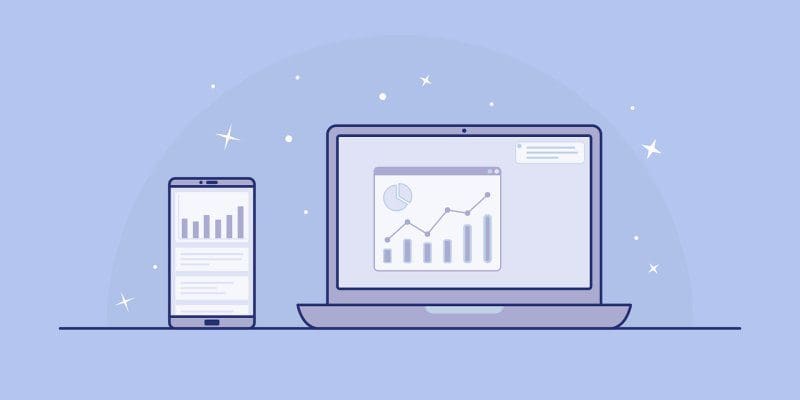5 Big Trends in Data Analytics
Data analytics is the process by which data is deconstructed and examined for useful patterns and trends. Here we explore five trends making data analytics even more useful.
By Malcom Ridgers, BairesDev
Data analytics is the process by which data is deconstructed and examined for useful patterns and trends. The more this process is automated and the more granular it is, the more useful it can be for companies and organizations looking to save money, increase revenue, optimize efficiencies, and connect with customers.
As more data sources become available, technology is keeping up by developing new applications to make meaningful connections and deliver actionable insights. Companies with broad resources may choose to develop such applications in-house, while others can seek the services of outsourcing companies to assist.
But custom-developed data analytics software isn’t necessarily highly complex, requiring expert data analysts to use. In fact, as technology advances, it’s enabling the ability of all types of professionals to gather these vital recommendations. Here we explore five trends making data analytics even more useful.
1. Natural Language Processing
Natural language processing (NLP) is like the Google of data analytics in that it allows users to perform queries in natural human language, with either written or voice input. This technology is making data analytics accessible to a more diverse cross-section of professionals, including front-office workers.
This ability will continue to grow in sophistication. For example, currently, you may be able to ask things like, “What is the average spend per customer this fiscal year?” As the technology evolves, you’ll be able to ask things like, “What is the average spend per customer within a 10-mile radius this fiscal year versus last fiscal year?”
2. Augmented Analytics
Using artificial intelligence and machine learning, augmented analytics gives users a programmed way to find the most important insights. It does so by automatically combing through the data of a company or organization, analyzing it, and returning actionable insights. This method takes a fraction of the time of manual analysis. It may reduce the need for data science and machine learning experts while requiring professionals in other roles (such as small business owners) to enhance their data literacy.
Dataversity observes, “The technology has disrupted the analytics industry by merging artificial intelligence and machine learning techniques to make developing, sharing, and interpreting analytics easier.” According to Gartner, augmented analytics is emerging as a “dominant driver of new purchases of analytics and business intelligence as well as data science and machine learning platforms.”
3. Blockchain
Blockchain technology is most well-known for its role in cryptocurrency but it can be used for a wide variety of tasks across industries. Blockchain has the capability to enhance predictive analytics because it verifies data validity, preventing false information from being included in analyses. A hacker would have to change all blocks within a blockchain to tamper with the data. In most cases, this action is more trouble than it’s worth. Thus, the insights gleaned are more reliable and therefore more valuable.
According to SmartData Collective, “When paired with Blockchain, Data Science is turned into something far more structured and concrete, so it becomes even more useful.” Blockchain also enables data analytics applications to mine larger amounts of data, making insights that much more worthwhile.
4. Continuous Intelligence
Continuous intelligence might also be called real-time intelligence. This type of data query is becoming increasingly possible as technologies like the cloud, streaming software, machine learning, and the Internet of Things (IoT) grow more advanced and interconnected. According to Dataversity, “It processes historical and current data to provide decision-making automation or decision-making support,” and, “It recommends actions based on both historical and real-time data.”
Such recommendations offer almost endless potential for helping professionals develop new programs and offers for customers based on up-to-the-minute data about their preferences and actions. Additionally, states Dataversity, “The technology has the potential to act as a ‘core nervous system’ for organizations such as trucking companies, airlines, and railroads,” which can use it to adjust schedules for optimal efficiency and profit.
5. Data Fabric
A data fabric enables seamless data sharing across a distributed network. Gartner defines it as a “custom-made design that provides reusable data services, pipelines, semantic tiers, or APIs via a combination of data integration approaches in an orchestrated fashion.” In other words, data analytics applications can incorporate data from a variety of sources and make beneficial connections using all data streams.
According to data fabric provider Talend, a data fabric can help an organization by “providing a single environment for accessing and collecting all data, no matter where it’s located and no matter how it’s stored – eliminating data silos.” Additionally, it enables “simpler and unified data management, including data integration, quality, governance, and sharing, by eliminating multiple tools and providing faster access to more trustworthy data.”
In Summary
Data analytics is highly useful for businesses and organizations of all kinds - and it’s getting more so all the time. The developments listed here are offering advanced direction that can drive revenues and customer loyalty up, waste and inefficiency down, and the competition to wonder how they got left behind.
Bio: Malcom Ridgers is a tech expert specializing in the software outsourcing industry. He has access to the latest market news and has a keen eye for innovation and what's next for technology businesses.
Related:
- Top 6 Reasons Data Scientists Should Know Java
- Free Data Analytics Courses
- Largest Dataset Analyzed – Poll Results and Trends

